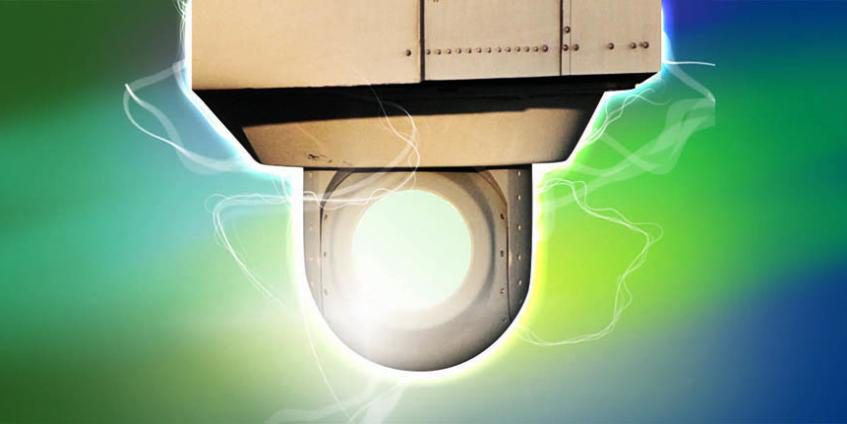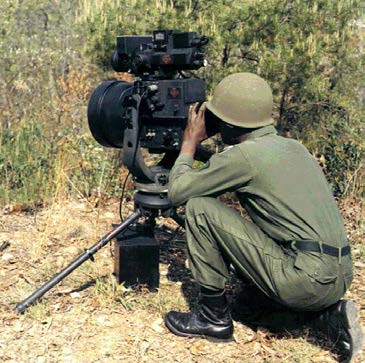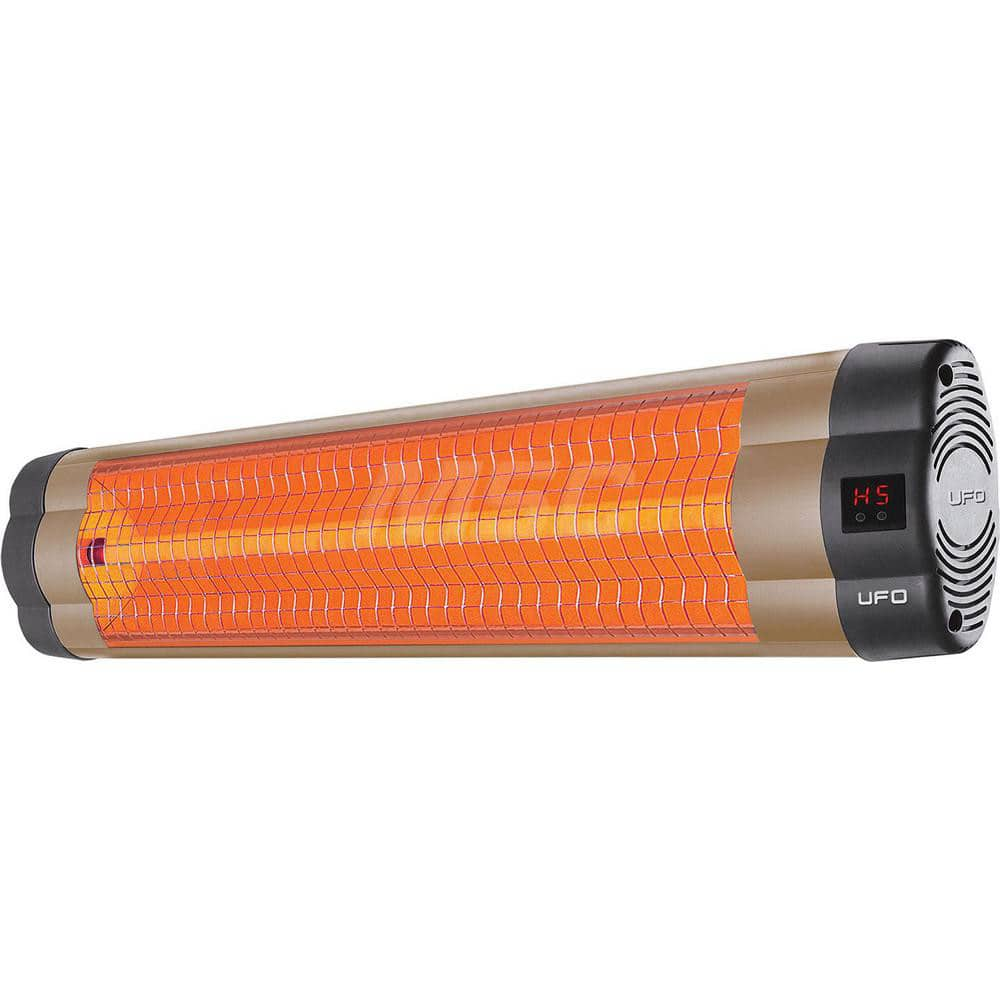Unveiling the Power of Infrared Technology: Benefits, Applications & Product Recommendations

Overview
In a world driven by innovation and technological advancement, Infrared Technology stands as a powerful tool with a wide range of applications and benefits. From its humble beginnings in the 19th century to its pivotal role in modern industries, Infrared Technology has come a long way. In this comprehensive guide, we will explore the history, advantages, and diverse applications of Infrared Technology. From its contributions to the environment to its impact on engineering projects and economic considerations, Infrared Technology continues to shape our world in profound ways.
Table of Contents:
- Part I - The Evolution and Applications of Infrared Technology
- Part II - Exploring Infrared Technology Products: A Comprehensive Guide to GoVets' Product Categories
- Part III - Unveiling the Power of Infrared Technology: Top 10 Benefits
- Part IV - Alternative Technologies to Infrared Technology
Part I - The Evolution and Applications of Infrared Technology
Infrared technology, often referred to as IR technology, has come a long way since its discovery in the late 19th century. Today, it plays a pivotal role in various industries, from healthcare to manufacturing, offering a wide range of applications and benefits. In this comprehensive guide, we will delve into the history, advantages, and top applications of Infrared Technology.

A - A Brief History of Infrared Technology
The journey of Infrared Technology begins with the discovery of infrared radiation, which lies just beyond the visible spectrum of light. Sir William Herschel, an astronomer, made a significant breakthrough in 1800 when he conducted an experiment using a prism to disperse sunlight. He observed that a thermometer placed beyond the red end of the visible spectrum registered higher temperatures than expected, even though no visible light was present. This discovery marked the beginning of the exploration of the infrared region.
1. Early Developments
Throughout the 19th century, scientists made strides in understanding and harnessing infrared radiation. Sir Frederick William Herschel, the son of Sir William Herschel, continued his father's work and made improvements in thermopiles, devices designed to detect and measure heat radiation. These early experiments laid the foundation for the development of practical infrared technology.
2. World War II and Infrared
World War II marked a significant turning point in the history of infrared technology. Military applications drove the advancement of infrared imaging and sensing technologies. Infrared cameras, initially developed for military night vision purposes, became a crucial tool for soldiers on the battlefield, enabling them to see in the dark.

3. Post-War Innovations
After World War II, the application of infrared technology expanded beyond military use. Researchers and engineers began exploring its potential in various civilian applications. In the 1950s, the introduction of solid-state detectors and sensors revolutionized infrared technology, making it more accessible and practical for commercial and industrial purposes.
B - Benefits of Infrared Technology
Infrared technology offers a multitude of benefits that have contributed to its widespread adoption across diverse industries. Here are some of the key advantages:
1. Non-Contact Measurement
One of the primary advantages of infrared technology is its ability to perform non-contact measurements. Infrared devices can capture data from a distance without physical contact with the object being measured. This feature is invaluable in applications where contact may not be feasible or safe, such as monitoring moving machinery or measuring the temperature of hot surfaces.
2. Speed and Efficiency
Infrared technology provides rapid results. Infrared thermometers and cameras can provide temperature readings and thermal images almost instantaneously. This speed is crucial in applications where quick decision-making is essential, such as industrial maintenance, healthcare, and emergency response.
3. Safety
Infrared technology enhances safety by allowing operators to assess potentially hazardous environments from a safe distance. For example, firefighters use thermal imaging cameras to locate hotspots and victims in smoke-filled buildings without exposing themselves to excessive heat and danger.
4. Precision
Infrared sensors offer high precision in temperature measurement. They can detect temperature variations as small as fractions of a degree, making them invaluable in applications where accuracy is critical, such as medical diagnostics and scientific research.
5. Energy Efficiency
In the realm of building and energy management, infrared technology plays a vital role in identifying energy leaks, insulation problems, and inefficient heating or cooling systems. By pinpointing areas of energy loss, it helps reduce energy consumption and lower utility costs.
6. Versatility
Infrared technology is incredibly versatile. It spans a wide range of applications, from heating and temperature measurement to thermal imaging and security. Its adaptability makes it an indispensable tool in various industries.
C - Top Applications of Infrared Technology
Infrared technology has found its way into numerous applications, revolutionizing industries and enhancing our daily lives. Here are some of the top applications where IR technology shines:
1. Thermography
Thermography, also known as thermal imaging, utilizes infrared technology to capture thermal images of objects and surfaces. It is widely used in building inspections, electrical maintenance, and healthcare. In building inspections, thermographers can identify hidden moisture issues, electrical faults, and insulation problems by detecting temperature variations. In the medical field, thermal imaging helps in diagnosing diseases and monitoring patient conditions.
2. Night Vision
Infrared technology is synonymous with night vision. Military, law enforcement, and security agencies rely on night vision goggles and cameras to operate in low-light or completely dark environments. These devices amplify available infrared light, allowing users to see clearly in the dark.
3. Industrial Maintenance
In industrial settings, infrared technology plays a crucial role in predictive maintenance. Infrared cameras and thermometers are used to monitor equipment and machinery for signs of overheating or malfunction. By identifying potential issues early, maintenance teams can schedule repairs, reduce downtime, and prevent costly breakdowns.
4. Healthcare
Infrared thermometers have become standard equipment in healthcare settings, especially during the COVID-19 pandemic. They enable healthcare professionals to take temperature measurements quickly and accurately without physical contact. Infrared thermography is also used in medical diagnostics, such as detecting vascular disorders and breast cancer.
5. Security and Surveillance
Infrared technology enhances security and surveillance systems. Infrared cameras can capture clear images in low-light conditions, making them essential for monitoring premises, public spaces, and critical infrastructure during the night.
6. Environmental Monitoring
Environmental scientists use infrared technology to monitor natural phenomena and climate-related variables. Infrared sensors on satellites and drones help gather data on forest fires, volcanic eruptions, and changes in land and sea temperatures.
7. Consumer Electronics
Infrared technology has found its way into consumer electronics as well. Many smartphones are equipped with infrared cameras that can capture thermal images. This feature is utilized for tasks such as identifying heat loss in homes or checking the temperature of household appliances.
8. Energy Efficiency
Infrared technology is instrumental in assessing the energy efficiency of buildings and industrial facilities. Infrared cameras can identify areas of heat loss or excess heat, enabling improvements in insulation and HVAC systems to reduce energy consumption.
9. Agriculture
Farmers use infrared technology to monitor crop health and irrigation. Infrared sensors can detect temperature variations in crops, helping farmers make informed decisions about irrigation and disease control.
10. Materials Testing
Infrared technology is employed in materials testing and quality control. It can detect defects and inconsistencies in materials and products by analyzing their thermal properties.
D - The Future of Infrared Technology
As technology continues to advance, the applications of infrared technology are expected to expand even further. Miniaturization and cost reduction are making infrared sensors more accessible, leading to innovations in consumer electronics, automotive safety systems, and smart home automation. Additionally, ongoing research is exploring the use of infrared technology in fields such as environmental conservation, agriculture, and space exploration.
In conclusion, Infrared Technology has a rich history marked by scientific discovery, military innovation, and civilian applications. Its numerous benefits, including non-contact measurement, speed, safety, precision, and versatility, have made it an indispensable tool in a wide range of industries. From healthcare and industrial maintenance to security and environmental monitoring, Infrared Technology continues to shape our world and pave the way for future innovations. As we look ahead, the potential for new discoveries and applications in the world of IR technology remains limitless.
Part 2 - Exploring Infrared Technology Products: A Comprehensive Guide to GoVets' Product Categories
Infrared technology has rapidly evolved over the years, finding applications in various industries and everyday life. From heating solutions to temperature measurement and imaging devices, the world of Infrared Technology is vast and diverse. In this comprehensive guide, we will delve into the fascinating world of Infrared Technology and explore the wide range of products available in this category on GoVets.com. Infrared technology encompasses a wide range of products that utilize the infrared spectrum for various purposes. At GoVets, you can find an extensive selection of Infrared Technology products, including:
- Infrared Suspended Heaters
- Electric Infrared Heaters
- Electric Infrared Heater Panel Emitters
- Electric Infrared Tubular Heater Elements
- Electric Infrared Heater Accessories
- Gas Infrared Flat Panel Heaters
- Gas Infrared Patio Heaters
- Gas Infrared Tube Heaters
- Infrared Thermometers & Thermal Imaging Cameras
- Fixed Location Infrared Cameras
- Infrared Cameras
- Infrared Cameras for Smart Phones
- Infrared Temperature Sensors
- Infrared Temperature Sensors Accessories
- Infrared Thermometer and Imager Accessories
- Infrared Thermometer Calibrators
- Infrared Thermometers
- Infrared Visual Thermometers
- Infrared Windows
Now, let's dive into each of these categories to get a deeper understanding of the products they offer.
1. Infrared Suspended Heaters
Overview
Infrared Suspended Heaters are a highly efficient heating solution, ideal for commercial and industrial spaces. They emit infrared radiation, which heats objects and people directly without wasting energy on heating the air. These heaters are often used in spaces with high ceilings, such as warehouses and workshops.
Typical Applications
- Warehouses: Infrared Suspended Heaters are commonly used to keep large warehouse spaces warm and comfortable for workers.
- Workshops: Mechanics and craftsmen benefit from the focused heat provided by these heaters during colder months.
- Retail Spaces: Retailers use them to create a warm and inviting atmosphere for customers.
Product Recommendations
2. Electric Infrared Heaters
Overview
Electric Infrared Heaters are efficient and reliable heating devices suitable for various settings. They are known for their quick and targeted heating capabilities.
Typical Applications
- Patio Heating: Electric Infrared Heaters are commonly used in outdoor patios at restaurants and homes to provide warmth for patrons and guests.
- Garages: Many people use them to heat their garages, making it more comfortable for DIY projects and car maintenance.
- Greenhouses: Electric Infrared Heaters help maintain optimal temperatures for plants in greenhouses.
Product Recommendations
3. Electric Infrared Heater Panel Emitters
Overview
Electric Infrared Heater Panel Emitters are versatile heating solutions that provide efficient and targeted warmth. These panels are designed for both residential and commercial use.
Typical Applications
- Home Heating: These emitters can be installed in homes for zone heating, allowing residents to warm specific areas as needed.
- Office Spaces: Electric Infrared Heater Panel Emitters are suitable for heating individual workstations, providing comfort to employees.
- Restaurants: Restaurants use them for outdoor seating areas to extend the usability of their outdoor spaces during colder seasons.
Product Recommendations
4. Electric Infrared Tubular Heater Elements
Overview
Electric Infrared Tubular Heater Elements are essential components in many heating systems. These elements emit infrared radiation, converting electrical energy into heat efficiently.
Typical Applications
- Industrial Ovens: These elements are commonly used in industrial ovens for precise and even heating.
- Food Processing: Electric Infrared Tubular Heater Elements play a crucial role in food processing equipment, ensuring consistent heating.
Product Recommendations
5. Electric Infrared Heater Accessories
Overview
Electric Infrared Heater Accessories include essential components and add-ons for electric infrared heaters. These accessories enhance the performance and functionality of your heating system.
Typical Applications
- Residential Heating: Electric Infrared Heater Accessories can be used to upgrade home heating systems, making them more energy-efficient.
- Commercial Buildings: Businesses can improve the heating efficiency of their spaces with these accessories.
- Industrial Settings: Electric infrared heaters and accessories are commonly used in industrial applications for precise heating control.
Product Recommendations
6. Gas Infrared Flat Panel Heaters
Overview
Gas Infrared Flat Panel Heaters are energy-efficient and versatile heating solutions. They are known for their rapid heating and consistent warmth.
Typical Applications
- Commercial Kitchens: These heaters are commonly used in commercial kitchens for rapid heating of cooking equipment.
- Restaurants: Gas Infrared Flat Panel Heaters are used in outdoor dining areas to provide comfort to diners.
- Industrial Facilities: Industrial settings often utilize these heaters for spot heating in large spaces.
Product Recommendations
7. Gas Infrared Patio Heaters
Overview
Gas Infrared Patio Heaters are designed for outdoor spaces, providing warmth and comfort to people enjoying open-air environments.
Typical Applications
- Restaurant Patios: Gas Infrared Patio Heaters are commonly seen in restaurant patios, extending the usability of outdoor dining areas.
- Residential Patios: Homeowners use them to create cozy outdoor lounging spaces during colder seasons.
- Event Venues: Outdoor event venues and entertainment areas often rely on these heaters for guest comfort.
Product Recommendations
8. Gas Infrared Tube Heaters
Overview
Gas Infrared Tube Heaters are widely used in industrial and commercial spaces for efficient and cost-effective heating.
Typical Applications
- Warehouses: Gas Infrared Tube Heaters are a popular choice for heating large warehouse spaces efficiently.
- Manufacturing Facilities: Manufacturers use these heaters for spot heating in production areas.
- Agricultural Buildings: Farm structures benefit from the consistent warmth provided by these heaters.
Product Recommendations
9. Infrared Thermometers & Thermal Imaging Cameras
Overview
Infrared Thermometers and Thermal Imaging Cameras are essential tools for measuring temperature and capturing thermal images in various applications.
Typical Applications
- Industrial Maintenance: These devices are used for preventive maintenance in industrial settings, detecting temperature irregularities.
- Medical Field: Infrared Thermometers are common in the healthcare sector for non-contact temperature measurement.
- Building Inspection: Thermal Imaging Cameras help identify energy leaks and insulation problems in buildings.
Product Recommendations
10. Infrared Cameras
Overview
Infrared Cameras are versatile devices that capture thermal images, providing valuable insights into temperature variations.
Typical Applications
- Building Inspections: Infrared Cameras help identify insulation issues, water leaks, and structural problems.
- Firefighting: Firefighters use thermal imaging cameras to locate hotspots during firefighting operations.
- Electrical Maintenance: These cameras are used to detect overheating electrical components.
Product Recommendations
11. Fixed Location Infrared Cameras
Overview
Fixed Location Infrared Cameras are designed for continuous monitoring of temperature in specific areas. They are used in various industrial applications.
Typical Applications
- Manufacturing Plants: Fixed Location Infrared Cameras are crucial for monitoring machinery and detecting overheating components.
- Energy Sector: They are used in power plants and substations to ensure equipment safety.
- Building Management: These cameras help maintain optimal temperature conditions in large buildings.
Product Recommendations
12. Infrared Cameras for Smart Phones
Overview
Infrared Cameras for Smart Phones are compact and portable devices that can be attached to smartphones, allowing users to capture thermal images using their mobile devices.
Typical Applications
- Home Inspections: Homeowners and inspectors use these attachments to identify hidden issues in properties.
- Outdoor Enthusiasts: Hikers and campers can use them for wildlife tracking and safety during outdoor adventures.
- DIY Projects: These attachments are handy for DIY enthusiasts working on various projects.
Product Recommendations
13. Infrared Temperature Sensors
Overview
Infrared Temperature Sensors are non-contact devices that measure temperature accurately and quickly.
Typical Applications
- Food Industry: Infrared Temperature Sensors are used to monitor food temperatures during processing and storage.
- Medical Field: These sensors play a vital role in clinical settings for contactless temperature measurement.
- Automotive: Infrared Temperature Sensors are used in automotive applications to monitor engine and exhaust temperatures.
Product Recommendations
14. Infrared Temperature Sensors Accessories
Overview
Infrared Temperature Sensor Accessories include essential components and add-ons that enhance the functionality and usability of infrared temperature sensors.
Typical Applications
- Laboratory Settings: Researchers and scientists use these accessories to ensure the accuracy and precision of temperature measurements.
- Industrial Maintenance: Infrared Temperature Sensor Accessories are used to protect and maintain sensors in industrial environments.
- Healthcare: These accessories are essential for medical professionals who rely on accurate temperature readings.
Product Recommendations
15. Infrared Thermometer and Imager Accessories
Overview
Infrared Thermometer and Imager Accessories include a range of products designed to enhance the functionality and versatility of these temperature measurement devices.
Typical Applications
- Industrial Settings: These accessories are commonly used in industrial environments to maintain and optimize the performance of thermometers and imagers.
- Fieldwork: Professionals in fields like construction and agriculture rely on these accessories for accurate temperature data in the field.
- Research and Development: Scientists and researchers use these accessories to customize their equipment for specific experiments.
Product Recommendations
16. Infrared Thermometer Calibrators
Overview
Infrared Thermometer Calibrators are essential tools for maintaining the accuracy and reliability of infrared thermometers.
Typical Applications
- Quality Control: Manufacturers use these calibrators to ensure that their infrared thermometers meet industry standards.
- Laboratories: Calibration is critical in laboratory settings, where precision is paramount.
- Healthcare: Medical professionals rely on calibrated thermometers for accurate patient care.
Product Recommendations
17. Infrared Thermometers
Overview
Infrared Thermometers are non-contact temperature measurement devices widely used in various applications for their speed and accuracy.
Typical Applications
- Healthcare: Medical professionals use Infrared Thermometers for fever screening and patient care.
- Food Industry: Infrared Thermometers are essential for monitoring food temperatures during cooking and storage.
- Automotive: Mechanics and technicians use them for diagnosing engine and exhaust system issues.
Product Recommendations
18. Infrared Visual Thermometers
Overview
Infrared Visual Thermometers combine temperature measurement with visual imaging, providing valuable insights into temperature variations.
Typical Applications
- Electrical Maintenance: These thermometers help detect overheating electrical components before they fail.
- Building Inspections: Infrared Visual Thermometers are used for identifying energy leaks and insulation problems.
- Safety Inspections: Firefighters and safety inspectors use them to locate hotspots during inspections.
Product Recommendations
19. Infrared Windows
Overview
Infrared Windows are transparent plates that allow infrared radiation to pass through while providing a protective barrier for equipment and personnel.
Typical Applications
- Electrical Panels: Infrared Windows are commonly used in electrical panels to inspect and monitor electrical connections without exposing personnel to live equipment.
- Manufacturing Facilities: They are used in industrial settings to ensure the safety of workers during thermal inspections.
- Data Centers: Infrared Windows help monitor temperature fluctuations in data center equipment.
Product Recommendations
Section Wrap-Up
Infrared technology has revolutionized various industries, offering efficient heating solutions, precise temperature measurement, and thermal imaging capabilities. Whether you need to keep your commercial space warm, diagnose engine issues, or ensure the safety of electrical systems, GoVets offers a wide range of Infrared Technology products to meet your needs. Explore these categories to discover the latest advancements in Infrared Technology and enhance your applications with cutting-edge solutions.
Part IV - Alternative Technologies to Infrared Technology
While Infrared Technology offers a wide range of applications and benefits, it's essential to acknowledge that alternative technologies exist to address similar needs in various fields. Depending on specific requirements, budget constraints, and the nature of the application, these alternatives may offer viable solutions. Here, we explore some of the main alternative technologies to Infrared Technology for different applications.
1. Visible Light Imaging
Alternative to Infrared Cameras for Surveillance and Night Vision
Visible light imaging relies on capturing the light within the visible spectrum. While not suitable for complete darkness, visible light cameras excel in well-lit environments. They are commonly used for daytime surveillance and security applications. The drawback is that they are ineffective in low-light or pitch-black conditions without additional lighting.
2. Ultraviolet (UV) Imaging
Alternative to Infrared for Medical and Healthcare Applications
In some medical applications, ultraviolet (UV) imaging can be an alternative to infrared technology. UV imaging can help detect skin conditions, such as melanoma, by revealing patterns not visible to the naked eye. However, UV imaging is limited to specific medical applications and may not provide the temperature data that infrared thermography offers.
3. Microwave and Radar Technology
Alternative to Infrared for Remote Sensing
Microwave and radar technologies are used for remote sensing and object detection in a variety of applications, including weather monitoring and aircraft navigation. They can provide valuable information in conditions where infrared may not be effective, such as heavy rain or fog. However, they are typically used for purposes different from those of infrared technology.
4. Contact Temperature Sensors
Alternative to Non-Contact Infrared Thermometers
In situations where non-contact measurement is not necessary or feasible, contact temperature sensors, such as thermocouples and resistance temperature detectors (RTDs), can provide accurate temperature readings by physically contacting the object. These sensors are often used in industrial applications, laboratories, and quality control processes.
5. X-ray Imaging
Alternative to Infrared for Material Inspection
X-ray imaging is commonly used for non-destructive material inspection, such as in the aerospace and automotive industries. It can reveal internal structures and defects that may not be detectable through infrared technology. However, X-ray imaging involves ionizing radiation, which requires safety precautions and shielding.
6. Acoustic Imaging
Alternative to Infrared for Leak Detection
In some industrial and environmental applications, acoustic imaging can be an alternative to infrared technology. It is used to detect leaks in pipelines or tanks by listening for sound anomalies associated with escaping fluids or gases. Acoustic imaging is particularly useful in situations where visual inspection is challenging.
7. Visible Light Thermometers
Alternative to Infrared Thermometers
In environments with sufficient lighting, visible light thermometers can provide temperature measurements using the color changes of certain materials, such as liquid crystals or temperature-sensitive paints. These thermometers are suitable for educational purposes and simple temperature checks but lack the precision and non-contact capability of infrared thermometers.
8. Fiber Optic Temperature Sensors
Alternative to Infrared Temperature Sensors
Fiber optic temperature sensors use the principle of optical fiber technology to measure temperature. They are suitable for applications where electromagnetic interference, electrical hazards, or chemical exposure would interfere with infrared sensors. Fiber optic sensors can provide accurate temperature data in challenging environments.
9. Ultrasonic Inspection
Alternative to Infrared for Detecting Structural Flaws
Ultrasonic inspection involves sending high-frequency sound waves through materials to detect flaws or defects. It is commonly used in industries like construction and aerospace to assess the structural integrity of materials and components. While it doesn't provide temperature data, ultrasonic inspection serves a unique purpose in non-destructive testing.
10. Chemical Sensors
Alternative to Infrared for Gas Detection
For the detection of specific gases or chemical compounds, chemical sensors are employed. These sensors can be highly selective and sensitive to particular substances, making them essential in environmental monitoring, industrial safety, and gas leak detection.
Section Wrap-Up
In summary, while Infrared Technology offers a wide array of advantages and applications, it's essential to recognize that alternative technologies exist to meet specific needs in different fields. The choice of technology depends on factors such as the application's requirements, environmental conditions, and budget constraints. As technology continues to advance, these alternatives may evolve, offering even more choices for various applications.
Final Thoughts
As we conclude our journey through the world of Infrared Technology, it becomes evident that its influence reaches far and wide. From preserving our environment and enhancing engineering projects to bolstering economic viability, Infrared Technology plays a pivotal role in addressing diverse challenges and driving progress. Its applications are boundless, and its benefits are undeniable. As technology continues to evolve, so too will the capabilities and impact of Infrared Technology, promising a future where its contributions to society are even more profound.












